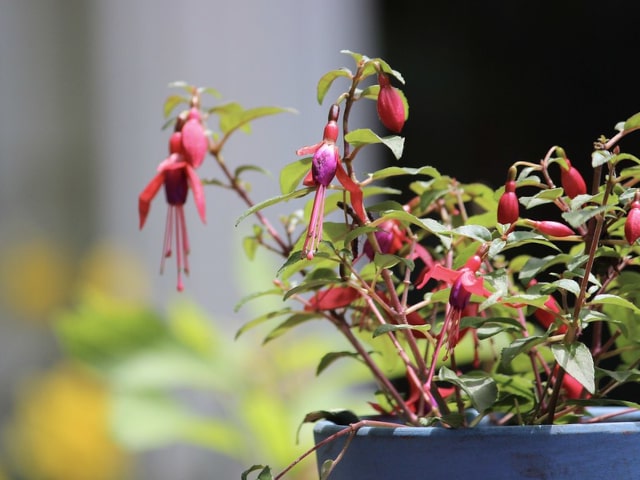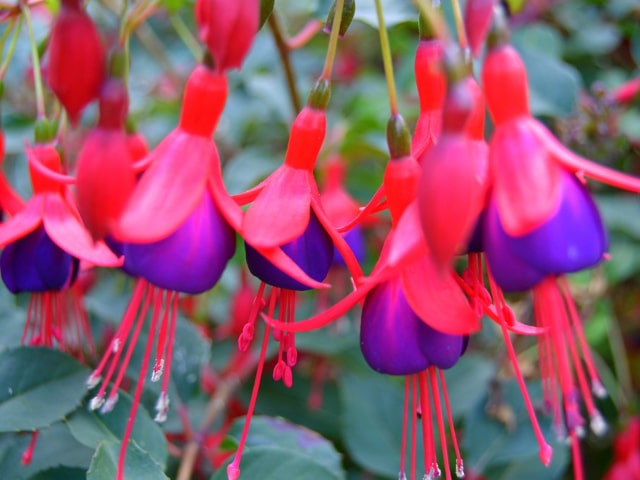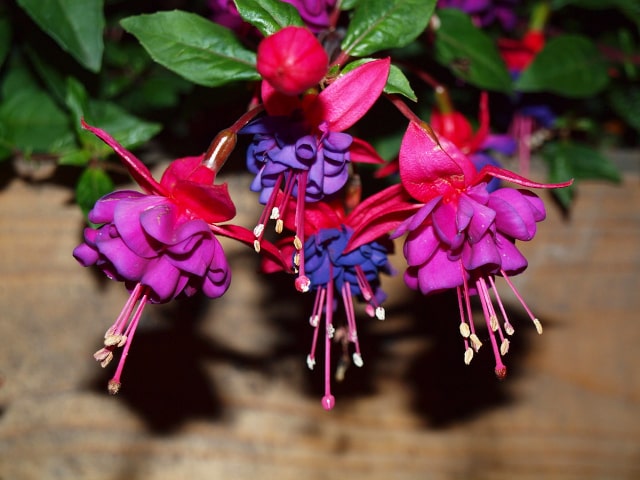
In order to properly care for your Fuchsia plants, you need to know when to prune them. Pruning is extremely important for shrubs, including Fuchsias. Another vital thing you need to know is how to propagate your Fuchsia plants.
These two tasks are important for both the outdoor and indoor Fuchsias. It is vital to know how to do pruning and propagating of your garden Fuchsia plants. Potted Fuchsias also require this care, particularly when it comes to propagation with the purpose of repotting your plants. Some people choose to grow potted Fuchsias outdoors while others keep their plants indoors. All of these scenarios require you to know how to do pruning and propagation.
How to Prune Fuchsia Plants
Fuchsias are evergreen shrubs but they still greatly benefit from pruning. It is also best to defoliate the plant during the pruning time so it can grow stronger and healthier.
One thing you need to understand about Fuchsia plants is that they can tolerate vigorous pruning. It means that you can cut a lot of it without consequences. Most of the time, you can cut it to the ground if necessary. However, this much pruning is generally not practiced unless there is an emergency. It is not the best idea to cut to the ground delicate varieties through these can, too, withstand so much pruning if necessary.
The best way to prune your Fuchsias is to simply remove as much of the plant as you expect to be replaced in the following year. This will ensure that your plant stays the same size year after year. You might not be sure how much to prune the first time, but don't worry: like noted above, Fuchsias can withstand vigorous pruning so chances are that you will not make a disastrous mistake. The following year, monitor your plant's growth to know how much to cut in the fall during the next pruning.
The only exception to this general pruning rule are young Fuchsia plants. These plants are smaller than their adult size so they cannot go through too much pruning. You should prune young plants lightly.
Pruning should be done in the fall. When pruning, make sure to remove all small, spindly wood. Leave a framework of heavy branches on the plant. This will allow your Fuchsias to thrive in the following year.
There are many indications that pruning improves the health and strength of your Fuchsias. Many people claim that garden Fuchsias improve with age. It is not uncommon to find Fuchsia plants that are 25 years old. This is why regular, annual pruning is important for your plants.
How to Propagate Fuchsias
There is good news for those who wish to propagate their Fuchsias: these are among the easiest plants you can grow from cuttings. It means that you can perform propagation easily and without much problem. Unlike some other plants, taking cuttings and propagating them is an easy task even for beginner gardeners.
The best and quickest way to propagate your Fuchsia plants is through cuttings. What seems to work particularly well is to use early spring or summer shoots before the plant develops flower buds. These shoots are sappy and easy to take from the plant.
When choosing shoots to make cuttings, seek soft, green branches that are about 2 to 4 inches long. Pick those that have not had any foliage removed in the previous year. Cut the branches to get your cuttings for propagation.
Prepare moist sand in a well-drained box to plant your cuttings. Insert them about half an inch deep into the sand. You can cover the box with a pane of glass. Keep the box in a well-lighted but shady place. Water the cuttings often enough to keep the sand moist. You need to prevent cuttings from wilting to be successful with propagation.
The roots should start to appear in 2 to 3 weeks of this care. This is when your cuttings are ready to be transplanted. It is best to transplant them into small pots filled with light soil. Plant them carefully so you don't hurt the delicate plants.
Keep your new Fuchsia plants sheltered and in a shaded area for about 10 days or so. This time is crucial because there is still danger of wilting. After this, your new plants should be strong enough and the anger of wilting has passed so you can consider propagation a success.
One thing to note: the earlier you make your cuttings, the larger the plants will be when it's time to winter them over for the following year. Keep this in mind when deciding to propagate your Fuchsias. If you want to be successful, it is best to do propagation of your Fuchsia plants as soon as you can.
Photo credit: garden beth




0 Comments